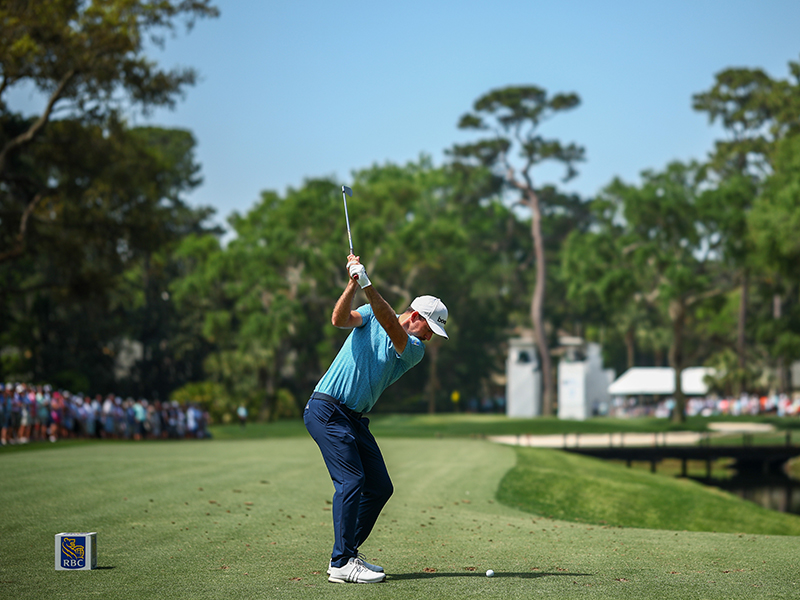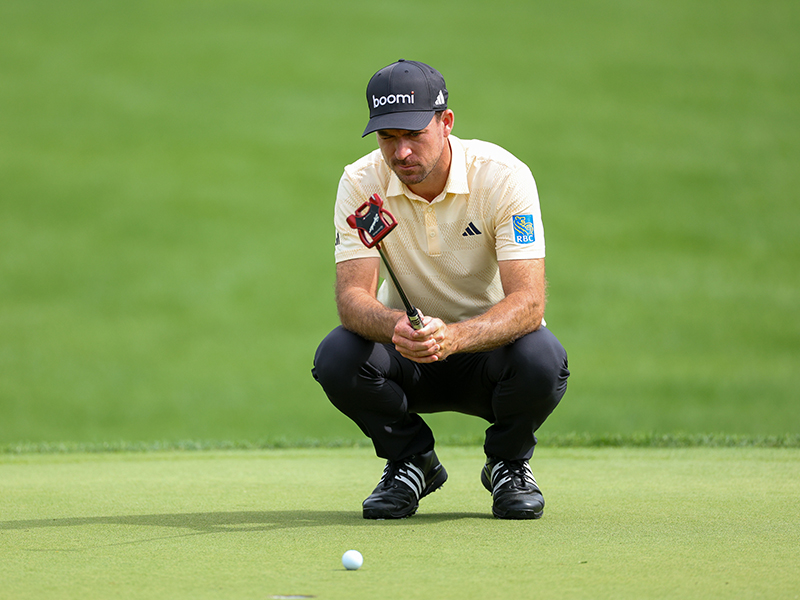
Learning from the tips and advice of a multiple PGA Tour winner is not an opportunity that comes around often, so when it does it's important to take advantage.
In this article, four-time PGA Tour champion Nick Taylor shares five of his favorite tips and drills to help all amateur golfers in their pursuit of improvement...
Nick Taylor's Top Tips: Step Drill
I do this drill with every club in the bag to really help with sequencing. I stand with both feet together and then, as the club gets back to parallel, I step into the shot with my left foot.
This gets my lower body moving before my upper body and gives me all the right feelings to make sure the sequencing in my swing is just right. It’s kind of my pre-shot routine out on the course, too, and a really useful on-the-go drill that you can do before every shot to get your swing feeling good.
I’d suggest people who want to try it start with just a 7-iron at the range, but it’s really a drill that can be used with any club in the bag to help with everything from timing to sequencing.
Distance Control
We use a lot of technology now to gain a clearer understanding of how far our irons go. I think all golfers should take advantage of this by getting a concrete idea of how far each club carries with a stock swing.
It’s also useful to have somewhat of a shorter swing or a swing that allows you to take some yardage off each club. I have what I call a 10:30 swing, which takes about 10 yards off an iron I want to hit – especially useful when I’m between clubs. This swing also takes the flight down a bit and takes some spin off, so it’s a vital one to have in the locker to play better in soft or windy conditions.
I work on this almost as much as my stock swing, so I’d urge amateurs to develop a swing or a feeling with each club that allows them to control yardage and spin.

My 'Randomise Test' Routine
As with my irons, I have three swings with my wedges that allow me to execute different types of shot when approaching greens. I call them full, 10:30 and 9 o’clock swings – effectively a full swing, three-quarter swing and a half swing. I’ve ground away at this and know every single carry yardage for all my wedges in the bag for each swing.
This fills in the gaps every seven to eight yards as I get closer to the green and means I’m never really in between shots when hitting a wedge. I’ll do a ‘randomise test’ on the range every now and then where I have to hit a certain number every time with my wedges. It keeps me sharp by recreating on-course scenarios.
Chalk Line Drill
This is a great tour player putting tip. The chalk line drill is actually something you see a lot of players doing on the greens before they go out to play. It’s simple, but effective.
You’ve got to find a dead-straight putt and draw a line in chalk on the green. Then you hit putts up that line to check pretty much every part of your stroke.
It helps you to calibrate your eyeline and check that your eyes are positioned correctly over the ball. It gets you to see if you’re starting the ball on line and it helps with aim, so it checks a lot of boxes. It’s a really nice drill to use as something before you go out to play, or as a way of diagnosing an issue if you’ve had a particularly bad day on the greens. It’ll help you identify what’s going wrong so you can then go and work on that.

Get Creative
Finally, I think being really creative during warm-ups is a great way of getting the mind moving, freeing it up a little bit and allowing yourself to relax right before you go out to play. Too often I think golfers tighten up and overthink when they’re warming up before a round.
So, if you can get on the range to hit a few warm-up shots, try something a bit different, a bit more fun, instead of just working on the exact shot you’re looking to hit on the 1st tee. Try shaping a few shots; try a few fun chips or tricky putts. If you do, you’ll find your mind in a more free and creative space once it comes to the real deal out on the golf course.







